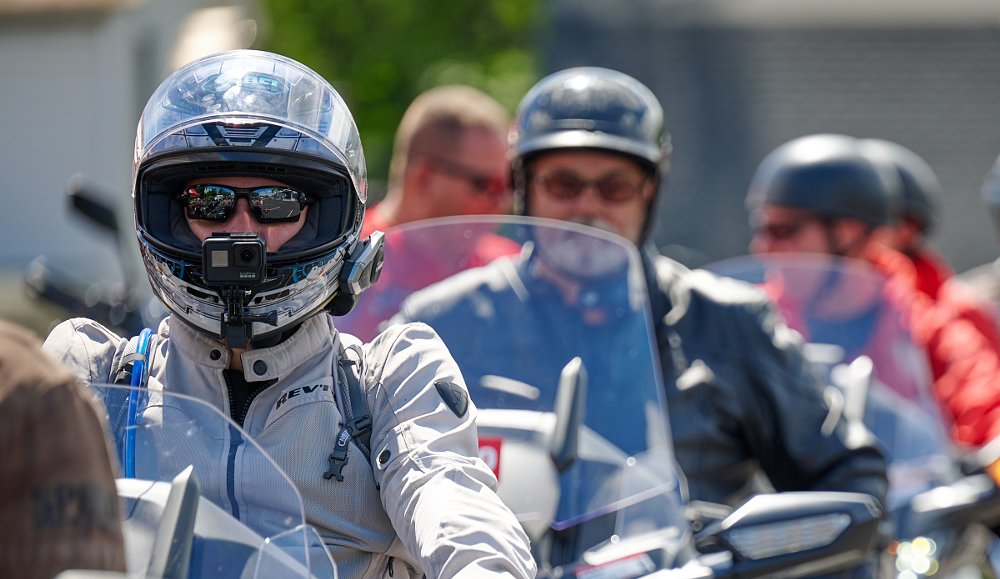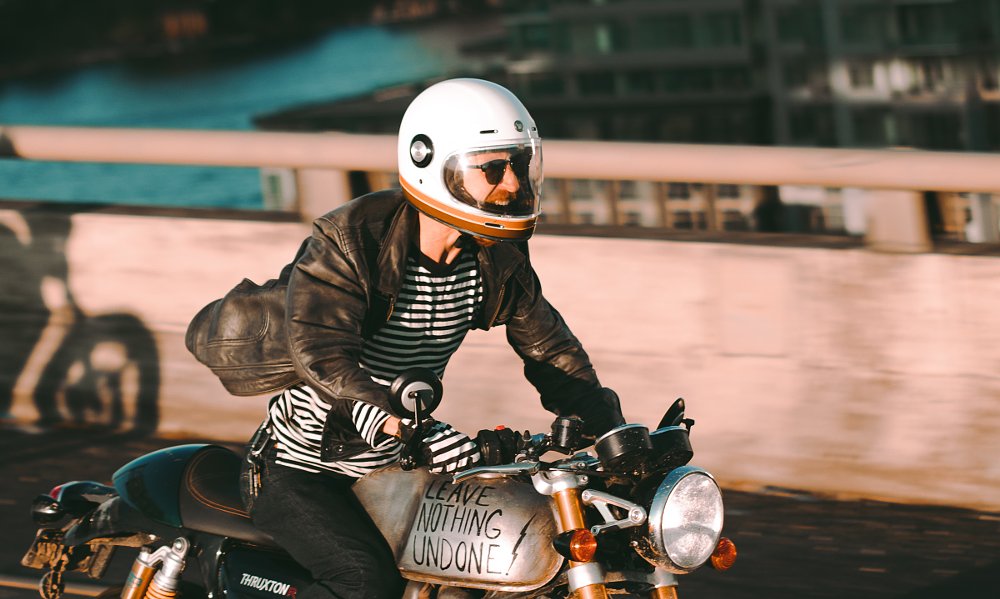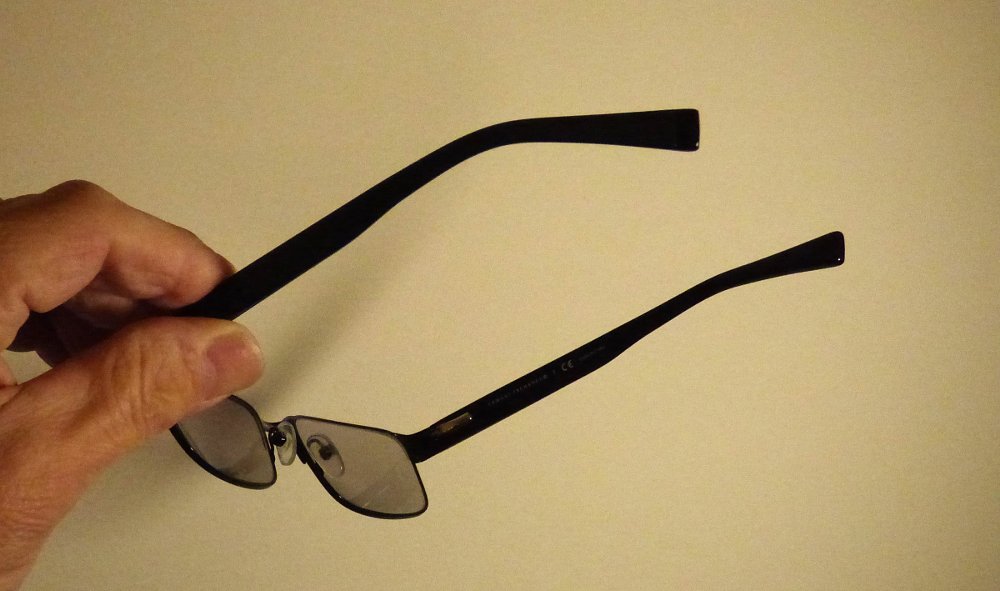I've worn glasses since I was in the fifth grade. Not long out of high school I got my first motorcycle, and soon after that my first full-face helmet, a Bell Star. My glasses fit through the eyeport but the interior padding put a lot of pressure on the arms of the frame, squeezing them painfully against my head. So I got a ball-peen hammer and pounded the padding down until the pressure went away.
That wasn't smart then, and it's not now, either. Wearing eyeglasses with a motorcycle helmet can be a literal headache, but for some of us it's necessary, and there are better ways of dealing with it than the approach taken by young me.

Choosing a motorcycle helmet if you wear eyeglasses
Each kind of motorcycle helmet involves a different challenge for riders who wear glasses. With a full-face helmet, the first inconvenience is having to take off your glasses before you put on or take off the helmet, and then put your glasses back on. It's a hassle at first, because it's one more step in the process of gearing up, but the tradeoff is that you get the maxiumum protection with a full-face helmet. (Pro tip: Don't put your glasses on your bike's seat while you put on your helmet, especially if it's idling on the sidestand, as it will happily deposit your expensive glasses on the ground.)
The other problem, as teenage me found out, is fitting your glasses inside the padding without discomfort. A larger eyeport is a good sign, but the bigger question is whether the the arms of your glasses easily slide between the padding and your temples and fit without any headache-inducing pressure. Today, more full-face helmets are designed with eyeglass-wearing riders in mind, but they are definitely not all created equal. Here's where a visit to your local Cycle Gear, RevZilla, or J&P Cycles store, where you can try on a variety of helmets to see how they work with your head and glasses, can pay off. If you order online from RevZilla, the gear geeks recommend that you wear the new helmet for a considerable time, with your glasses on, while you're inside. If it doesn't work, you can return it for a small fee, but test it in the safety of your living room. Once you've worn gear on a ride, it can't be returned.
Some riders who wear glasses opt for a modular helmet with a flip-up chinbar to avoid the issue of having to take off their glasses to put on or remove the helmet but you may find that's not a sure solution. My go-to helmet is a Shoei Neotec, which I can put on without removing my glasses, but when I take it off it removes my glasses for me. Some riders leave the chinbar in the up position almost all the time, leaving their glasses as the only thing between their eyes and a bee or a pebble. If you do this, get glasses with the best safety lenses you can buy.

Of course the same goes if you choose an open-face or shorty helmet. If you don't have glasses with shatterproof lenses, you can always wear motorcycle goggles that are made to fit over your glasses. Wearing your glasses and a half helmet may gain you the convenience of being able to take off or put on your helmet without fussing with your glasses, but you may also find that you're more likely to get dust in your eyes or for your eyes to dry out and become uncomfortable, especially on longer rides. Life is full of tradeoffs.
When you are shopping for a helmet, not only should you see how it fits with your glasses and how easy it is to put your glasses on, but you should also mimic the riding position on your bike. A sporty, forward-leaning riding position, for example, might make a small difference that could put pressure on the top of the glasses' frame. This is also a good time to test peripheral vision. I also suggest getting a helmet with good venting. Airflow behind the face shield helps keep your glasses (and the inside of the face shield) from fogging. Check online reviews to find out which models vent best. Bear in mind that no helmet vents very well behind a tall windshield. Shortening your barn-door screen might help.

Choosing eyeglasses if you wear a motorcycle helmet
Of course the helmet is only half the equation. Choices you make when buying eyeglasses can also help.
Some riders, including me, have glasses just for riding. Mine have a thin metal frame that's not so tall that it hits the padding at the top of the eyeport, and it doesn't block my peripheral vision. They also have straight arms that slide right in and don't need to be hooked over my ears. My "everyday" glasses, with their larger frames, don't fit comfortably in any of my helmets.
Take your helmet with you to the optometrist when you shop for frames so you can try them on while you're wearing it. You might get some stares, and a laugh or two, but it'll be worth it down the line in terms of both comfort and safety. The staff knows more about frames than you do, so tell them what the problem is and let them solve it for you with solutions like thin, flexible frames and hinged, spring-loaded arms.
If you ride a lot in the rain, you probably already have something like a Pinlock anti-fog insert for your face shield. There are also plenty of anti-fog sprays and treatments you can apply directly to your glasses, too. (In my experience their efficacy is spotty at best; go online for reviews.) You can also order eyeglass lenses with an anti-fog treatment, as well as an anti-reflective treatment that reduces light refraction at night. Tell your optometrist what you're using the glasses for and the conditions you ride in, and they'll help steer you to the right options.
Maybe you’re thinking about ditching your glasses altogether and getting contact lenses for riding. Remember that airflow inside the helmet? It can dry out those lenses, forcing frequent stops to apply eye drops. And if a contact lens falls out while you're riding, odds are you're not going to find it. If you don't have glasses you can ride with, at least take spare contacts.
If you're able to ride without your glasses, good for you. I'm not, so I always take a spare pair on road trips. I also have a photo of the prescription on my phone in case I manage to lose or damage both pairs. A hard carrying case is essential for life in a tank bag or pannier. A cleaning kit is handy, too, to get rid of the dust that accumulates on glasses after hours on the road. Trust me, the wash bucket next to the gas pump isn't the right tool for this job.
Any small discomfort you feel when you try on a helmet-glasses combination will magnify into a big headache after a long day on the road, so spending a little extra time when choosing a helmet and glasses can make a big difference. You'll be glad you did.








